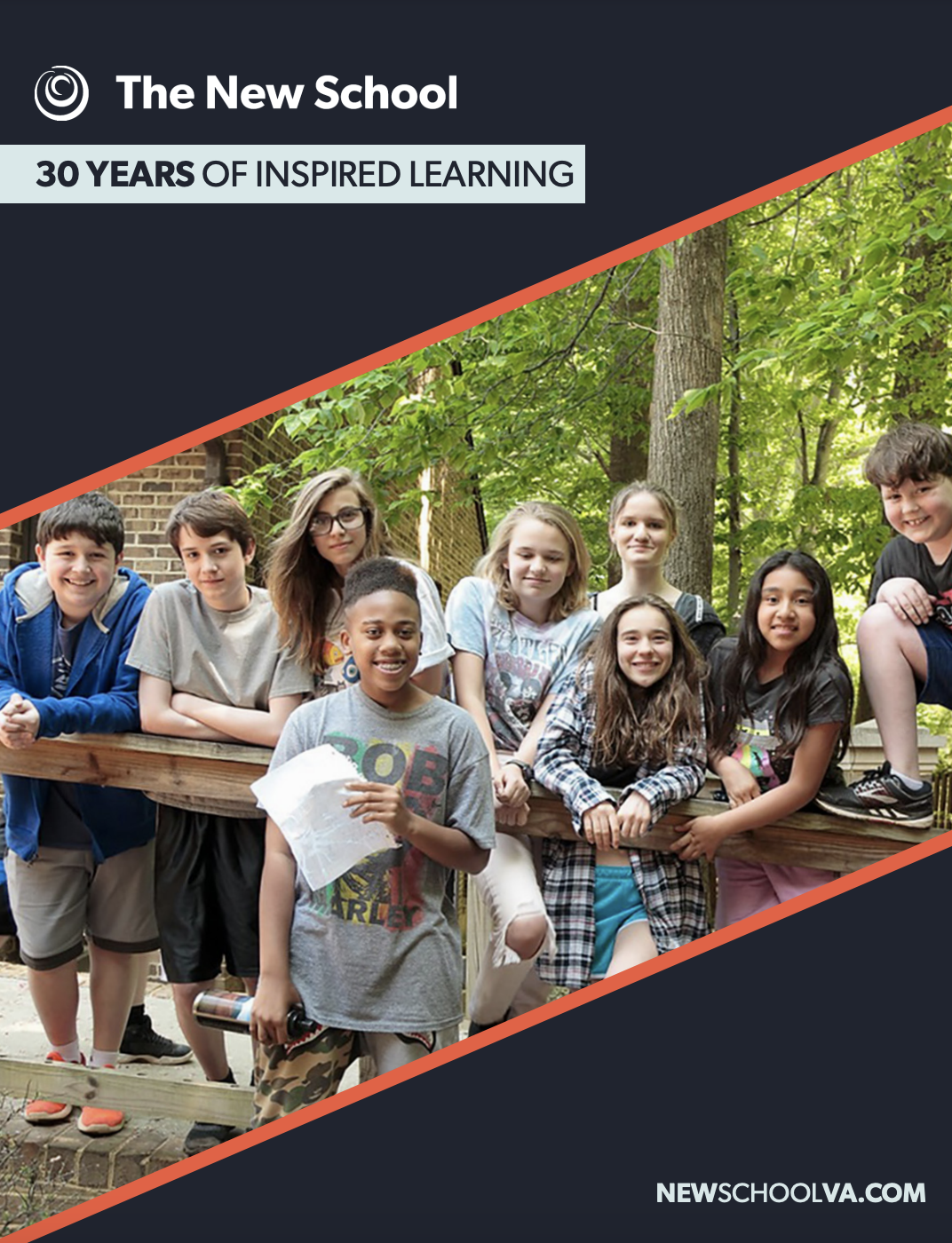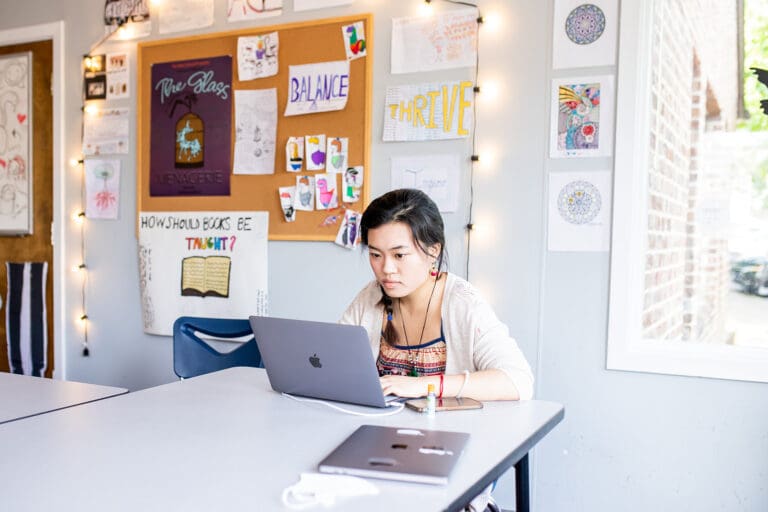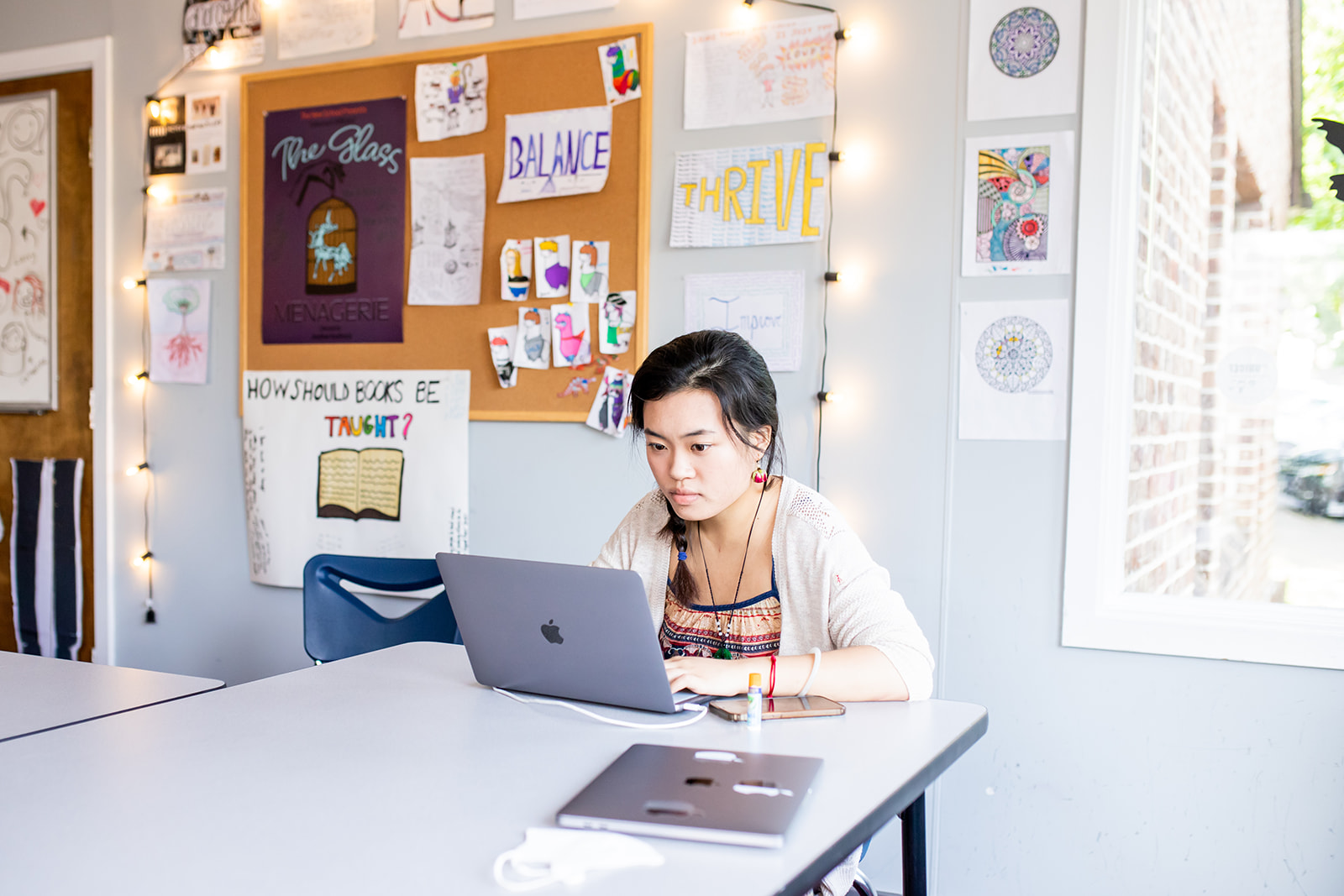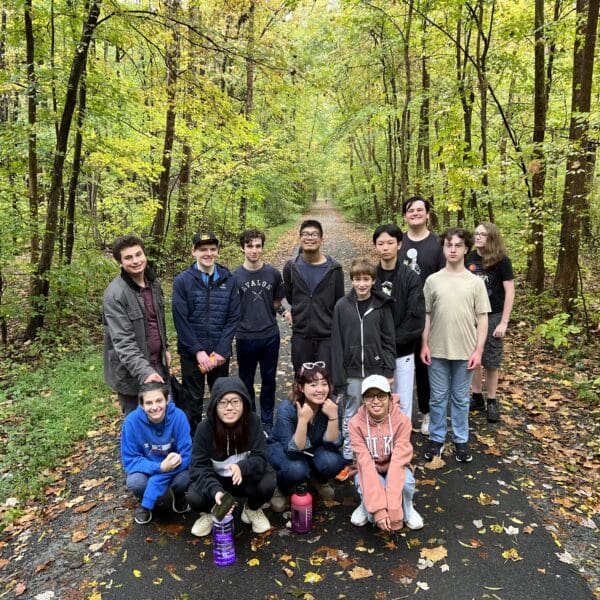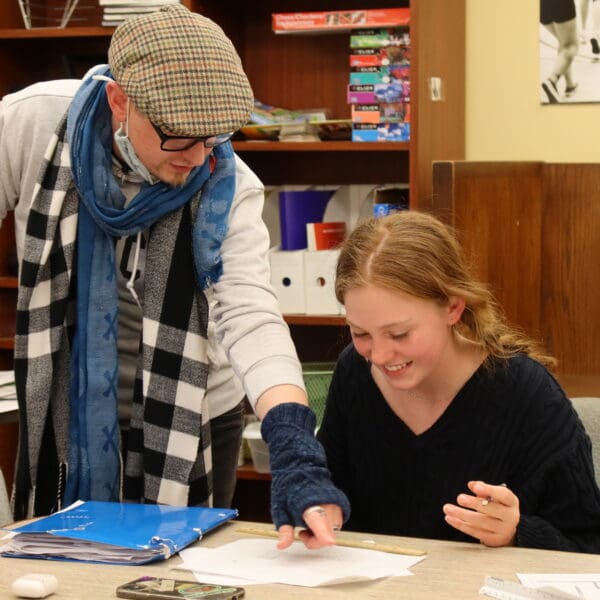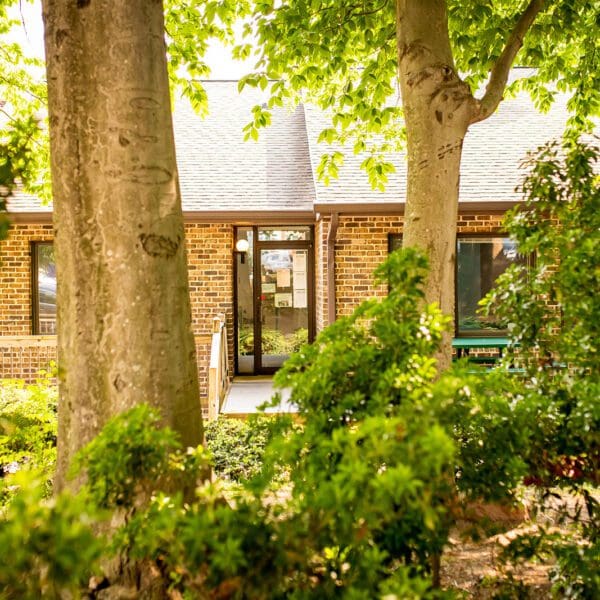High School should be a time of inspired growth and possibilities, and a school should make a positive and lasting impact on the whole individual – on their mind, heart and life – by
That is what we strive for at The New School. We are a college-prep learning community where students feel welcomed, valued, and motivated to take ownership of their education and lives.
Discover how students thrive at The New School.
Academic Offerings
Small classes that inspire critical thinking and self-motivation.
New School classes are designed as seminars with students sharing ideas and working closely with their teachers, setting them on a course to be confident, independent individuals prepared to succeed in college and beyond.
Academic Depth
Every student at The New School earns the same college-prep diploma, but we offer a variety of classes in each subject, giving students the opportunity to explore new topics and pursue their interests. The result is students excited by their class schedules and invested in their learning.
Purposeful Mentorship
Teachers at The New School work closely with students, giving them specific and supportive feedback on their work. We encourage our students to think for themselves and be comfortable in their own skin, and we guide them to be skilled, independent learners.
Honing Creativity
The New School is a full program with an equal balance of classes in the sciences, humanities, mathematics, and arts. We focus on applied learning, rather than simply memorization, across all subjects. Our approach teaches students to be creative in thinking, bold in sharing ideas, and inspired to innovate.
Growth Opportunities
The New School is designed for student involvement and diverse opportunities to explore and grow. Our sports teams – soccer, volleyball, basketball, e-sports, softball — are open to all; we have an active theater and yearly study & service abroad program; and our clubs are student-created and vast – from debate, to baking, to Dungeons & Dragons, to anime, to programming, to running.
Inclusion
We all know, respect, and listen to one another, and everyone has a voice within the school community. Our student government is open to all. We have an all-school meeting every day, which is an open forum where any member of the community may make an announcement.
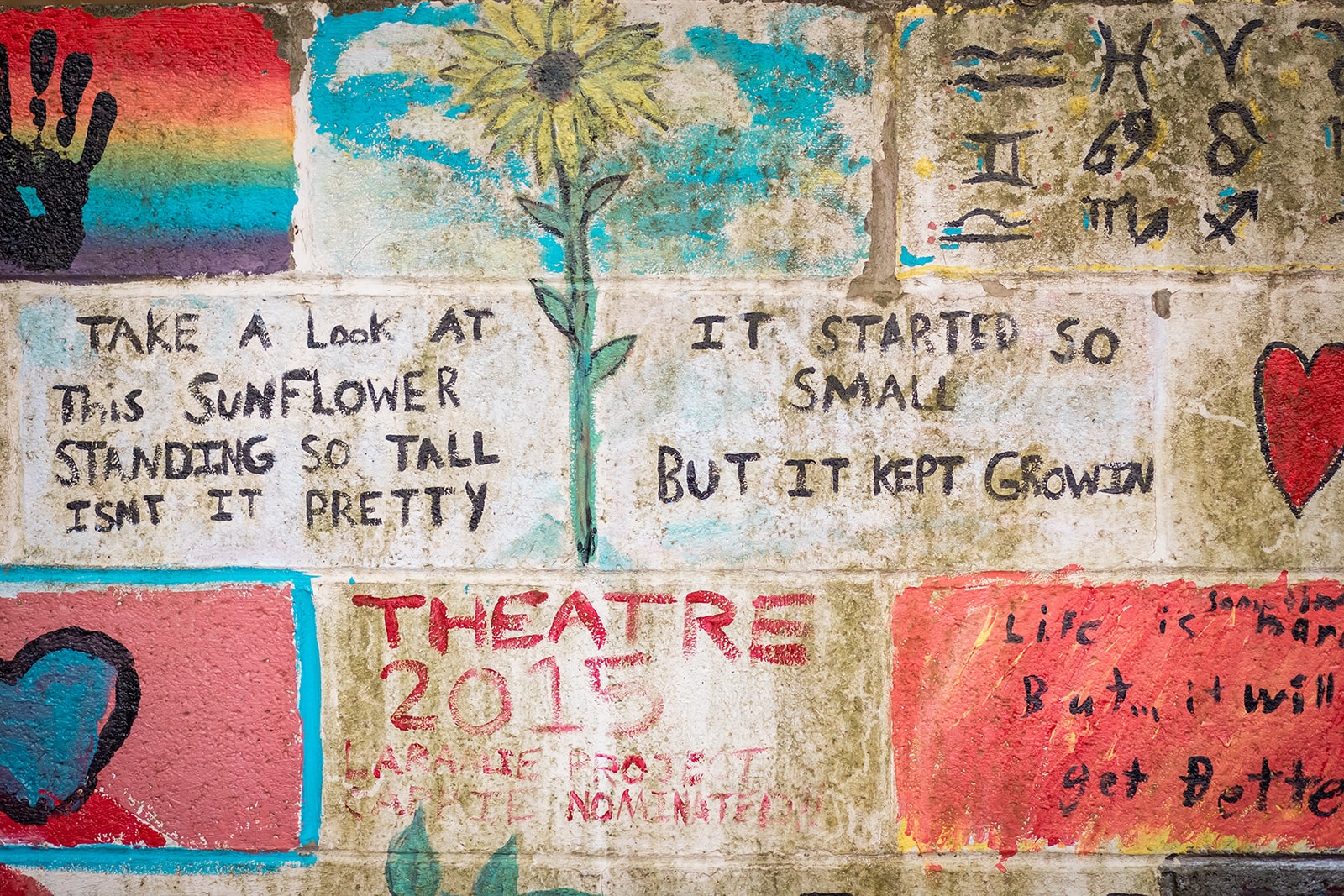

“They teach students how to learn, which I think is one of the most important gifts one can receive. Learning how to learn means taking responsibility when you do not understand something. It also means expressing your ideas and dreams. The New School encourages both.”
The New School Parent, Class of 2026
School Culture
An inclusive environment where students have a voice.
The New School is a people school, and when people feel appreciated as individuals and their unique voices are heard, they are at their best; they are thoughtful, open-minded, and invested in doing their part for the greater good.
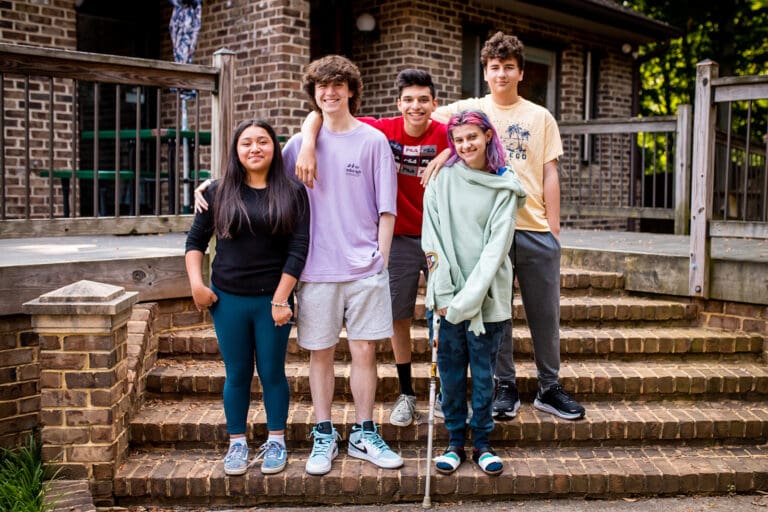

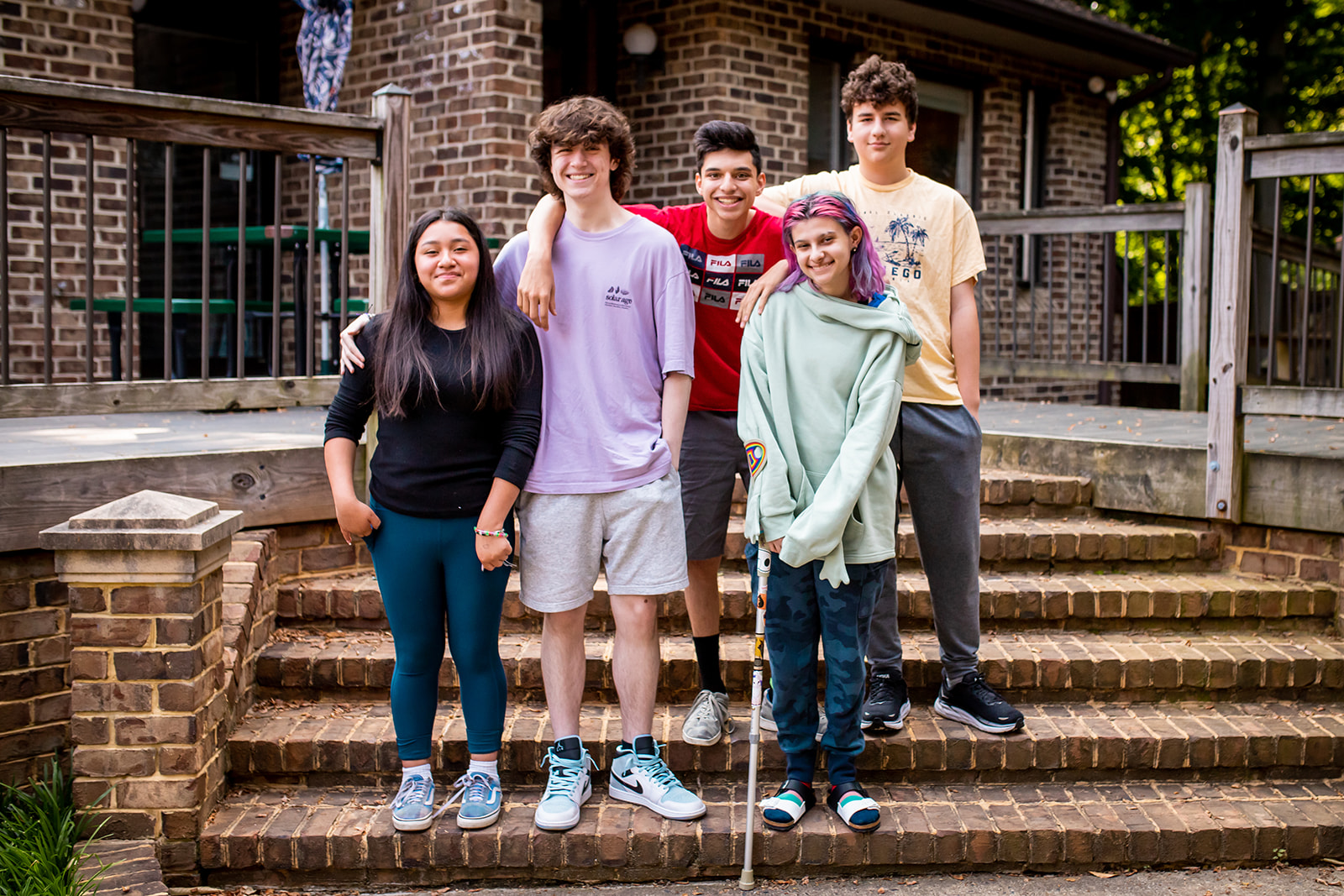

We’ve created this wholesome and inclusive culture by:
Fostering positive relationships.
Our small classes enable genuine connections to form among teachers and students.
Encouraging dialogue and accountability.
Our teachers work “at eye level” with students, giving them specific and encouraging feedback on their work. Our collaborative model encourages students to self-advocate, set higher standards for their work, and share their ideas.
Guaranteeing safety.
We know that students can only reach their potential if they feel intellectually and emotionally safe. Our culture of respect and empathy toward others gives students a sense of safety in and out of the classroom.
